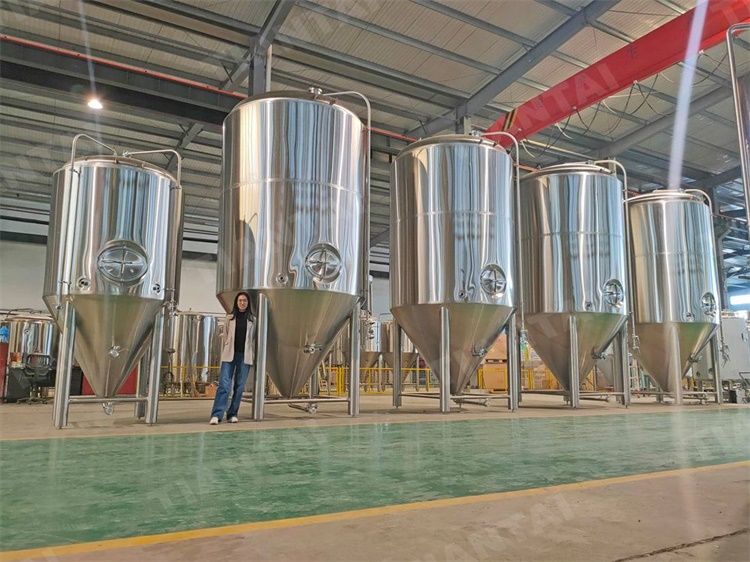What are the features of a plate heat exchanger? What kinds of methods are used to cool wort?
At present, the most commonly wort cooling equipment in the brewery brewing is plate heat exchanger, which is a closed cooling equipment made of stainless steel material, composed of many pieces of thin plate with grooves on both sides, two groups as a basic unit. During the wort cooling, hot wort and cooling medium through the pump to the form of turbulent flow along the grooves on both sides of the plate reverse flow to exchange the heat. The cooling plate unit can either be connected in parallel, or used in series or in combination.
The characteristics of the plate heat exchanger are described below:
(1) High heat transfer efficiency, the heat transfer coefficient is about twice the tube heat exchanger in the brewery brewing.
(2) compact structure, small footprint, in the same heat load, the space of plate heat exchanger required is only about 1/3 of the tube-type heat exchanger in the brewery brewing.
(3) High flexibility. Compared with the tube-type heat exchanger, the plates of the plate heat exchanger can be increased or decreased according to the size of the output to adjust the heat transfer area, it is very convenient in the brewery brewing!
(4) Good sealing performance
(5) High security in the brewery brewing
There are two main types of plate heat exchangers used for wort cooling: two-stage cooling and one-stage cooling. While two-stage cooling was the most common in the past, one-stage cooling is now increasingly being used.
(1) Two-stage cooling method
two-stage plate heat exchanger consists of front and rear two sections, with an intermediate plate installed between the two sections. The first cooling is using tap water as the cooling medium, the wort is cooled from 95 ℃ or so to 40 ~ 50 ℃, the cooling water is heated from nearly 20 ℃ to about 55 ℃; the second cooling is using the deep cooling refrigerant (ethanol or ethylene glycol solution) as the cooling medium, the wort is further cooled to the fermentation tank temperature of about 7 ℃, the refrigerant from -4 -3 ℃ temperature rise to O .The water can be recycled after it is cooled down again in the refrigeration station. The water after the heat exchange in the front part can be used as brewing water in the brewery brewing.
(2) One-Stage cooling method
This method uses a cooling medium to cool the hot wort (about 95°C) to the temperature of the inoculated yeast (about 7°C) at once. The cooling medium is brewing water, which is cooled to 2-4℃ (commonly called ice water) by direct cooling with ammonia, and then heated to 75-80℃ after heat exchange with the hot wort, and can be used directly as sparging water in the brewery brewing.
(3) Comparing the two methods, the one-stage cooling method has the following advantages over the two-stage cooling method.
A: One-stage cooling has simple equipment and does not require an intermediate plate. The cooling medium is brewing water, no need to use ethanol or ethylene glycol.
B: The two-stage cooling chiller has to keep the refrigerant at -4~-3℃, and bear the heat load of the wort from 40~50℃ down to about 7℃; the one-stage cooling chiller has to bear the heat load of the cooling water from room temperature to 2~4℃. Compared to the two, a cooling method can save 30% to 40% of electricity.
C: The outlet temperature of the first cooling water of two cooling stages is about 55℃, and it needs to be heated if it is used for washing lees; the outlet temperature of brewing water of one cooling stage is suitable for sparging in the brewery brewing.
Edited by Amy
[email protected]
- Email[email protected]
- Phone0086-18678821312
- VisitCN Jinan- 2668 Jichang Rd.


.jpg)



Get In Touch